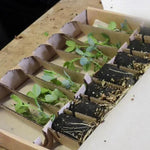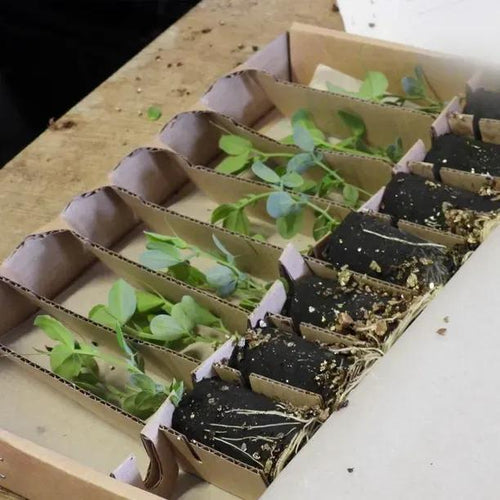Gwendoline Sweet Pea Plants
A sweet pea of enormous popularity with good reason, Gwendoline has enormous flowers that are white with a deep rose pink border that fades into the centre. Its undulating petals create a frilly effect, not least because there are so many of them. They're balanced by extra-long straight stems that are strong and enable this vigorous sweet pea to climb to over 2m if necessary. As a Spencer sweet pea, she is fragrant without being overpowering.
Browse our other Sweet Peas, or all of our Bedding Plants.
Our Sweet Peas are delivered in purpose-designed, recycled cardboard packaging, and are ready to be planted out when you get them.
We generally send them out between March and May, but we will email you with the likely delivery timescale once you have placed your order.
Growing Gwendoline Sweet Peas
Budding exhibitors at their local show should definitely invest in a Gwendoline to impress the bench. Her flowers fulfil all the technical requirements of the sweet pea expert while her verve and swagger are tremendously exciting. For ordinary mortals, a bunch of Gwendoline mixed with some sprigs of clary sage or blue flowered rosemary would be a delight on a bedside table. The pink and white colouring stands out against darker sweet peas like the excellent and recent cutting flower sweet pea, Magnificent Maroon or complements the shocking pink of Millennium.
Features
- Colour: pink & white
- Stem: extra long
- Height: 2.4 m
- Type: Spencer
- Scent: medium
- Flowering: June - August
- Planting Months: March-June
- RHS Award of Garden Merit
History & Trivia
Silas Cole was a gardener who worked for the Spencer family at Althorp in the early 20th Century. His passion was sweet peas, and it is down to him and his skill in breeding new varieties of sweet pea that the fashion moved from the small, fragrant and old-fashioned to these large, frilly and long stemmed varieties. The first Spencer Sweet Pea was Countess Spencer.
Awarded an RHS AGM in 1998.

 Secure, One-Tap Checkout
Secure, One-Tap Checkout
 Hand Picked, Delivered to Your Door!
Hand Picked, Delivered to Your Door! 1 Year Bareroot Guarantee
1 Year Bareroot Guarantee






